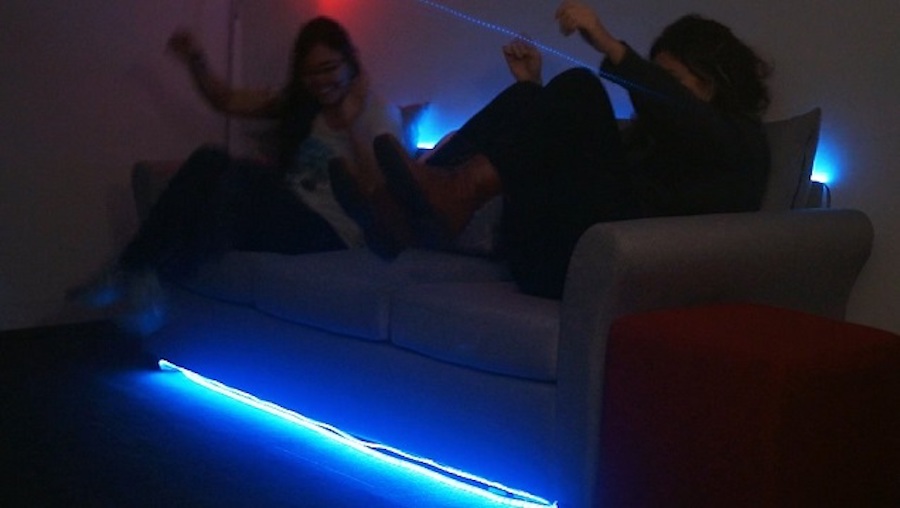Cooperative couch game uses aggressive sitting for input

At some point in your life, you may have wrestled over the preferred sofa cushion on which to sit, but what if these informal games of couch dominance were codified into an actual contest? That’s the idea behind the co-op game by Carol Mertz and Francesca Carletto-Leon, aptly named “HELLCOUCH.”
Unlike most “video” games, this system—which runs on an Arduino along with the Unity game engine—has no screen. Instead, it relies on lighting and audio cues to guide the players on where to sit, or as its disembodied voice puts it, “Perform the sacred butt ritual!”

The game takes around 90 seconds to play, during which time participants’ normal attitudes about giving each other space—and not bouncing around on the couch like crazy people—are thoroughly questioned.
It’s a challenge. At first glance, HELLCOUCH is designed to look like just a regular couch, so players don’t necessarily enter into it with the expectation of being silly and letting their guard down. We didn’t design an attract mode, and were careful to keep any indication of it being a “possessed” couch hidden until someone sits down. As soon as a butt hits a cushion, though, players are met with a loud thunderclap, demonic cackling, and a fiery array of lights. And when the game starts, solo sitters have to face the fact that they’re not going to be able to play alone, so they need to figure out how to get another butt or two in the game.
This theme and sound design are meant to set the stage for humor and joyful play. The first guidance players get is a disembodied demonic voice declaring that they need to “perform the sacred butt ritual,” which often makes players giggle or raise an eyebrow. The game only takes about 90 seconds to play, but often by the end folks get very comfortable embracing their role as a goofy demon liberator.
January 19th, 2019 at 14:37:05
Very cool, would like to build one of these 🙂